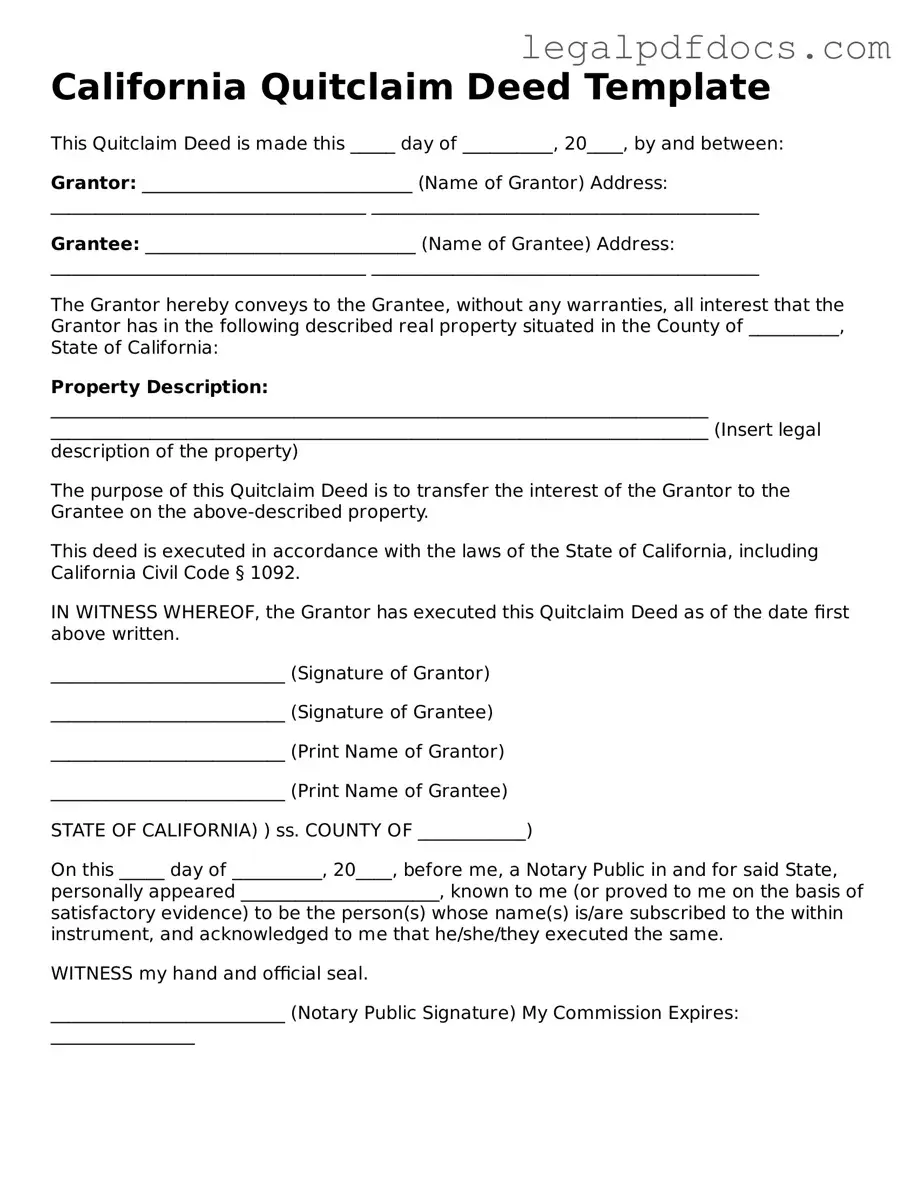The California Quitclaim Deed form serves as a crucial legal instrument for property owners looking to transfer their interest in real estate without making any guarantees about the title. This form is particularly valuable in situations where the granter wishes to relinquish their rights to a property, often among family members or in divorce settlements, where the transfer may occur without monetary exchange. Unlike other types of deeds, a quitclaim deed does not provide the grantee with any assurances regarding the validity of the title, which means that the recipient assumes the risk associated with any potential claims against the property. This lack of warranty can make the quitclaim deed a straightforward yet risky choice for both parties involved. The form must be properly filled out, signed, and notarized to be legally effective, and it is typically recorded with the county recorder’s office to ensure public notice of the transfer. Understanding the nuances of this deed is essential for anyone considering property transfer in California, as it can significantly impact ownership rights and future property transactions.
